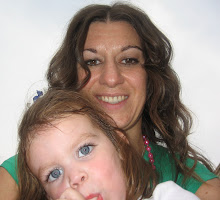On Wednesdays, my posts will focus on my correspondence with a group of eighth graders and their teacher, Lisa Herschberger, who teaches English at Goshen Middle School in Goshen, Indiana. We will be writing about the books we are reading, and Lisa and I hope to model how to talk about a story in more ways then just summarizing what happened. We hope to post our letters to and from each other, as well as letters from the students.
This week's letter is written by Kyle, an 8th grader who keeps himself busy doing things like playing basketball, riding his bike, and being on the computer. Kyle has always liked to read, and told me about one of his early childhood memories of sitting on the floor and looking through stacks of books. This reminds me of what my daughters do, and I hope they will love to read as much as Kyle does when they're older.
The first thing that impressed me about Kyle's letter was his response to my letter regarding Where the Mountain Meets the Moon. He says, "What interests me most about this book is how you said it felt like you were reading two books at once. I'm really curious about which question Minli will ask the Old Man of the Moon. I also want to find out what happens during Minli's adventure."
Kyle discussed the book Tunnels by Roderick Gordon in his letter. He writes, "This book is about a boy named Will, who loves to go on archaeological digs with his father. Then one day his father goes missing and the police try hard to find him, but they can’t. Will eventually goes out with his friend, Chester, to try and find him. In the process they discover an underground city, where Will finds out that he has another family living down there. He has no choice, but to live with them and Chester gets left behind in jail. Will tries to get him out, but everything goes terribly wrong. Will was able to escape and once again tries to save Chester, but this time he faces even more challenges.
The only thing I didn’t like about this book was that it started out slow. The beginning of the book was kind of boring, and I thought about abandoning it. But I’m glad I didn’t because once it got interesting, it stayed that way. The remainder of the book was suspenseful and was hard to put down.
My favorite character in this book was Will because I liked that he was so determined to save Chester. Even after he is safe above ground he convinces himself to go back underground. He tells himself, “I got Chester into this mess, and now I have to get him out of it.” I admire that Will is brave enough to go back, even though he knows that he might get into trouble.
Parts of this book were a little confusing, and there were quite a few difficult words. I’d say that this book is best for middle and maybe high school students. If it weren’t for the confusing moments and the difficult words, I think that this book would be great for everyone."
I think Kyle did a fine job of expressing his opinions about Tunnels as well as giving an interesting summary of what the book is about. It will definetely go on my "to read" list.
Sunday morning meds from Psalm 32
21 hours ago



















